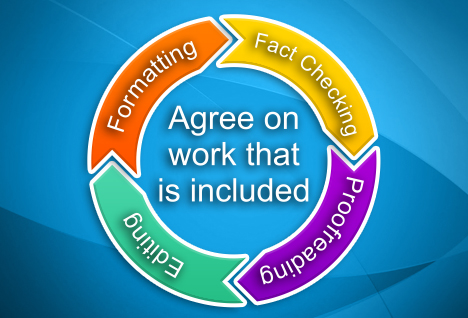Better Proofreading, Less Stress: 10 Ideas for Professional Proofreaders
13 February, 2020
By Andrea Eskin
Ask any professional proofreader, 'What's the worst thing about your job?' and you'll probably hear one of the following:
- Confusion. The client makes copies of a proof, asks ten of his colleagues for their input, and then returns all of them to you. Changes noted are contradictory, and you have no idea which ones are approved.
- Clutter. Noise, interruptions, time constraints, uncomfortable surroundings, physical impairments, fatigue, or other negative factors prevent you from doing a thorough job. You make errors that the client finds or that get published.
- Constraint. After giving the final approval, your client continues to submit 'just one more little change' to every proof. To meet deadlines you end up working around the clock, or submitting additional proofs, which strains both your efficiency and the client's budget.
Can you avoid these pitfalls and create a painless proofreading method that works? Here are ten suggestions that might help:
- Establish ground rules. Start by meeting with your client and, if practical, the graphic designer and printer. Create a realistic production schedule and make sure everyone involved knows what they will be expected to do. Designers and printers can help your client understand the complexity of the job, and often they can give advice that can prevent costly choices or mistakes.
- Give clear, specific instructions. Many clients can't resist the urge to 'tweak' the grammar, punctuation, style, and spelling in proofs. Let them know that they are not being asked to write anything, only to check content accuracy. One way to focus their attention is to highlight words and paragraphs they need to double-check.
- Find out who's the boss. If more than one person will review the proofs you submit, the final review should be done by whoever authorizes changes.
- Determine styles and references. Most large companies, academic institutions and government organizations create their own style guides. Before you plunge ahead with proofreading, make sure you're following the standards preferred by your client.
- Agree on the scope. Does the client want you to check for errors only in spelling, punctuation and grammar? Or does the job include basic fact-checking, too? After all textual edits are made, will you be expected to also examine and suggest adjustments to the format? Ask your client to be specific. However, if you find or suspect an error in the text, and it's not something you've been asked to correct, let the client know and offer to fix it if you're able.
- Document everything. Keeping detailed records and numerous proofs may be tedious, but if any mistakes are overlooked, this will help track them down. If it was overlooked by the client, you'll have his signature on the proof, indicating it was approved. If the printer made the error, you might be able to negotiate a discount on the bill.
- Be organized and consistent. Control (or at least minimize) the chaos by sticking to an approval method that works for everyone. Some suggestions include sending only copies of documents to your client and/or creating an approval form.
- Give yourself extra time. It's always a good idea to include 'wiggle room' of two or three extra days in your production schedule to accommodate unexpected delays due to problems on either end. Clients might re-write the copy, lose a proof, go on vacation, get sick, become busy, experience computer malfunctions, or simply misunderstand deadlines and directions.
- Have a backup plan. If, for any reason, you can't deliver on your promise to the client (illness, computer problems, etc.), notify him or her immediately and propose a solution. If the extra days you've built into your schedule (see #8) don't give you enough time to recover, ask if the deadline can be pushed back or if you can sub-contract the work to meet it.
- Speak the client's language. Most clients want to save time and money, but they also expect top quality. If they balk at keeping deadlines or returning signed proofs, explain how this process will help ensure they get exactly what they want and need - a maximum return on their investment.
 Figure 1: Agree the scope
Figure 1: Agree the scopeOf course, nothing is perfect. Careful record-keeping will help you deal with any problems or disagreements. However, regardless of what happens, how it occurs or who's at fault, always treat your clients respectfully and stay focused on what you can do to achieve a satisfactory outcome for everyone. By doing this, chances are excellent that your client will hire you again or recommend you to others—which is one of the best things about your job.
Andrea Eskin is a Proposal Writer and Publications Editor at TerraHealth, Inc. (THI) in San Antonio, Texas. She has 30 years of experience as a writer, editor and graphic designer of business publications.




